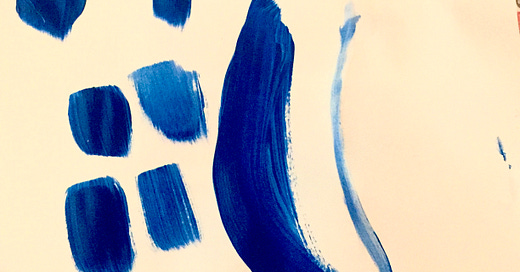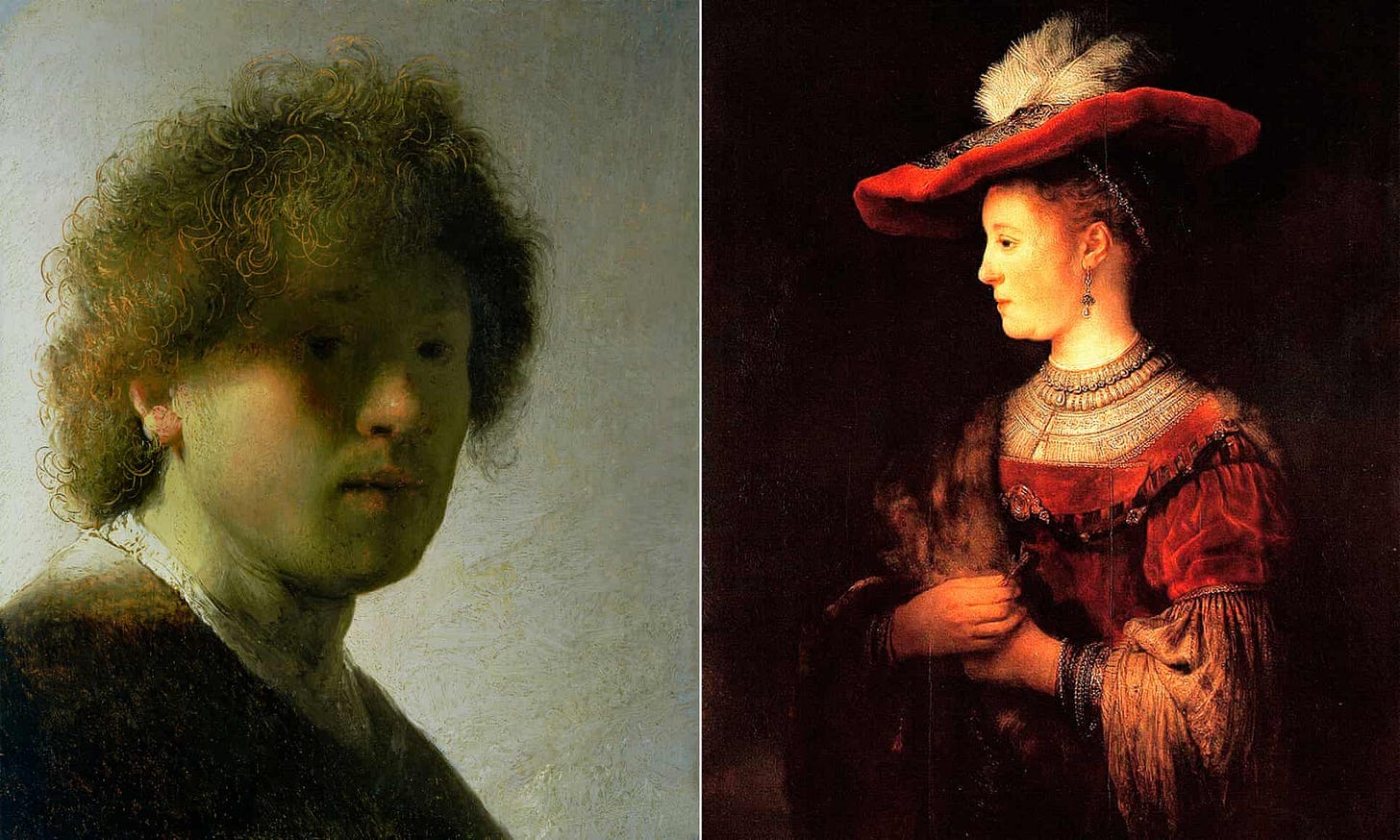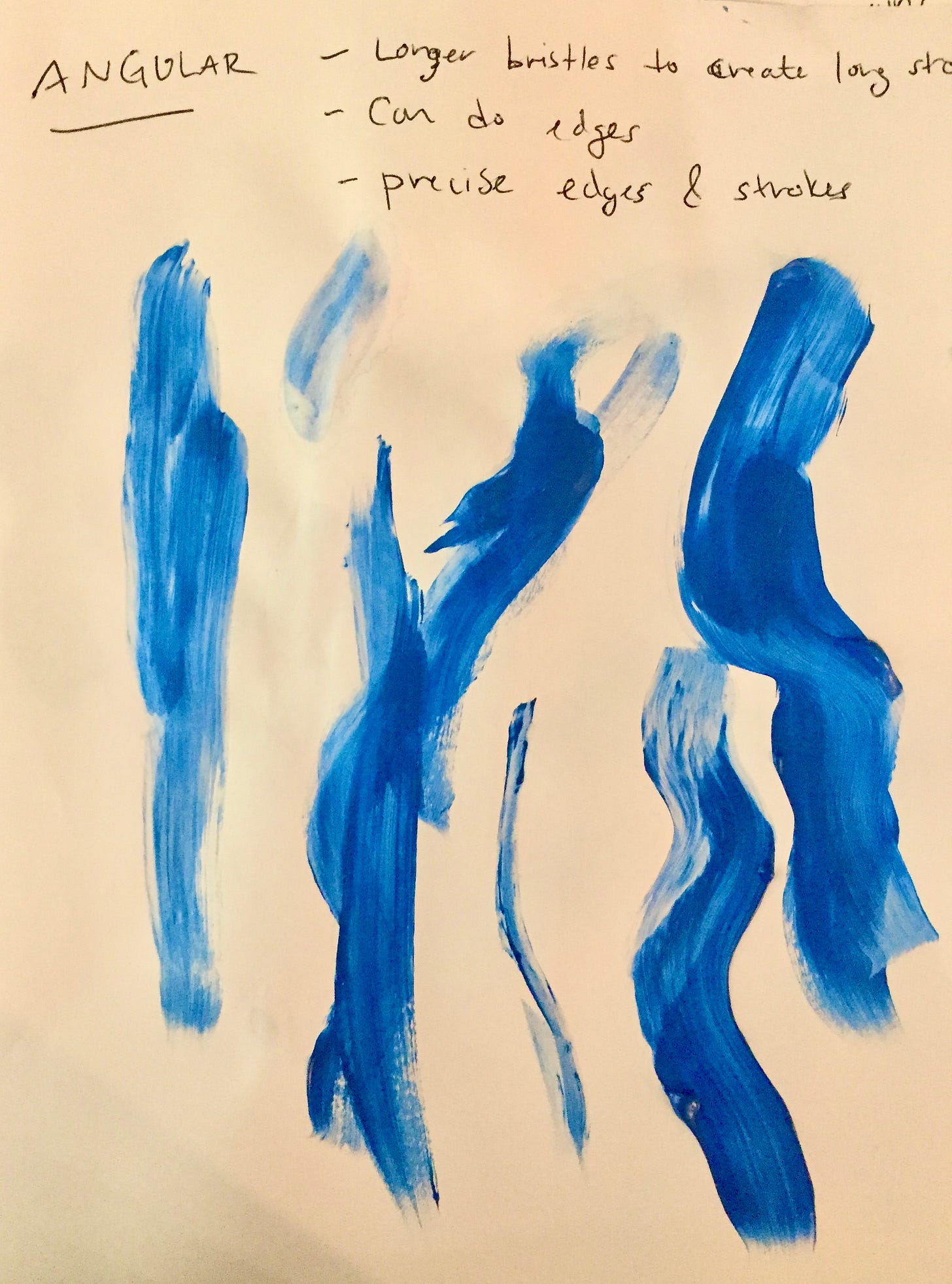All about brushes.
We learn so much about a painter from their brushstrokes. Show me what kind of marks you make and I’ll create a Psych 101-level psychological profile about you.
You love a 2-inch flat brush that allows you to wield paint like a sword? Aggressor, fantasies of heroism, too much energy, has been called moody from an early age. Your favorite tool is short-handled brush with the tiniest round tip? Your chopped vegetables are exactly the same size, you floss on the regular, you might have some Virgo in you.
I’m kidding, of course. (Kind of) A brush is a brush, and at any point any of us can surprise ourselves by reaching for a brush we typically overlook and blow up the expectations and assumptions we have of our own art.
But when learning to paint considering which brushes we repeatedly select is important because paying attention to what kind of marks we like to make is a key part of becoming a painter. You will need to pick a lane at some point as you find your style and part of defining your style is defining your marks.
Will you be like Rembrandt, who could build a face with just a handful of marks as he wielded a brush as heavy with paint as his heart was heavy with grief over the death of his beloved wife, Saskia?
Or are you like Jennifer Packer , washing her canvas with a wet, wide brush full of burnt oranges and faded pine greens and creating a dreamy field of vapors that provides the viewer a passage into another realm. Are you Matisse painting with his long bamboo stick or Helen Frankenthaler standing on her canvases moving fluid, wet piles of paint with two-inch brushes?
Art history gives us so many great ideas of how to play with brushes. Here are a few styles with a brush that helps you get started:
Pointillism - short-brushed, tiny round brushes allow you to dot pigment onto canvas to your heart’s content.
Expressionism - Want to be like Egon Schiele? Grab an angular brush that allows you to make the expressive, emotion-packed lines that define how Schiele paints the body, but it also allows you to fill in sections of your canvas with larger strokes of paint.
All-encompassing - In a single Kerry James Marshall painting there is an embarrassment of riches in terms of brushwork. There are large, flat patches of red fabric, delicate flower stems, defined brush marks and the intricate painting on a knife blade. Want to be like Marshall? Get yourself a wide range of sizes and styles so whether the painting calls for an expressively-outlined figure or a painterly flower petal you are ready.
Direct - Want to find the abandon of a Joan Mitchell painting? Buy a bunch of two-inch brushes that hold tons of paint and remind yourself that you owe nothing to anybody when you paint and that your painting is indispensable to the world.
A few things to ask when considering what kind of brush you should grab:
How thick you want your paint to be.
How opaque or transparent you want your paint to be.
How gestural you want your lines to be.
How rigid or reactive you want your lines to be.
How crisp you want your edges to be.
While I always suggest people start with an inexpensive brush kit, as people progress, it helps to invest in a brush or two in the style of brush that you usually reach for. Buy yourself a nice brush. It will be a game changer .
Happy Painting! Sara







